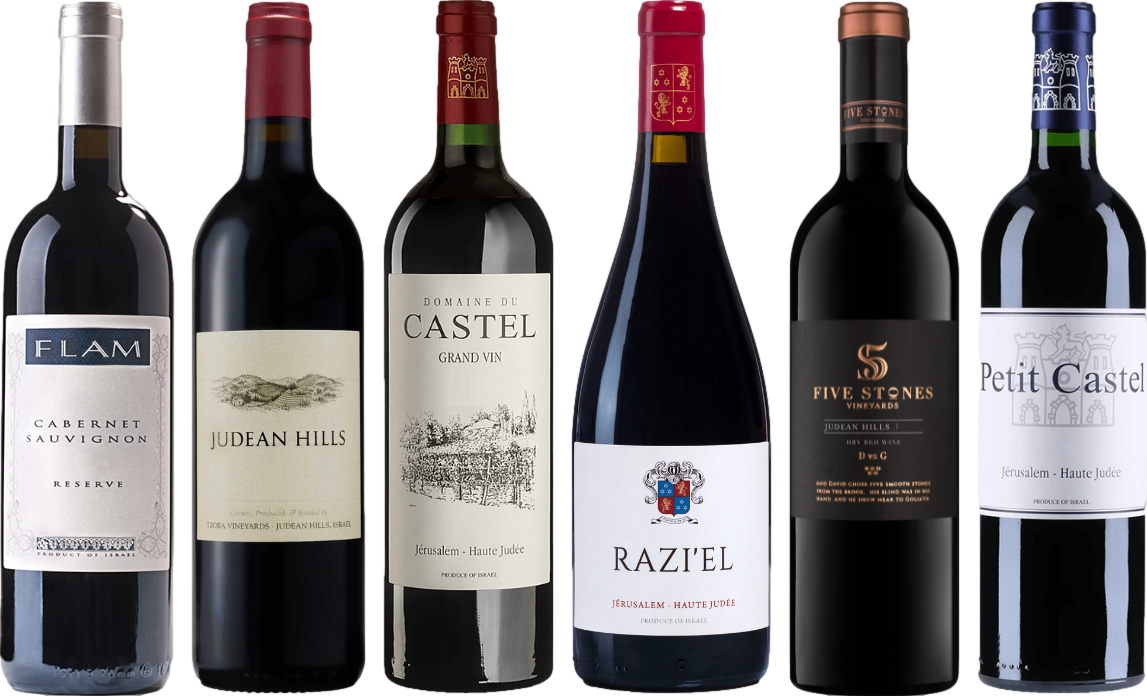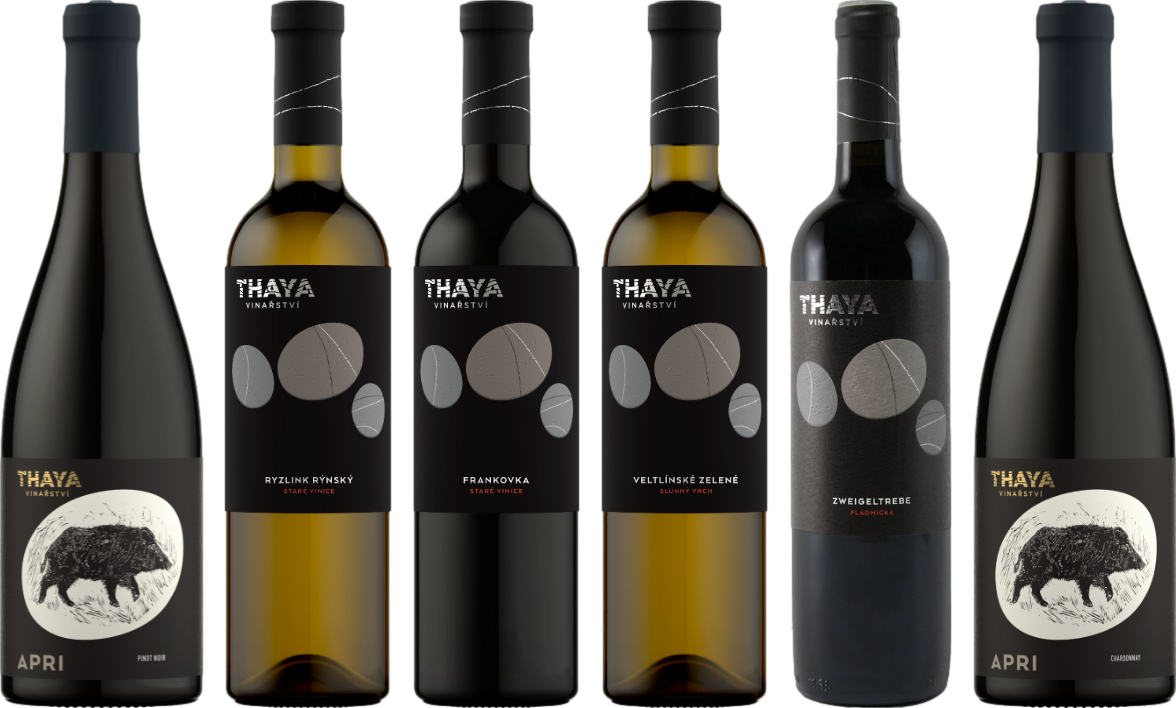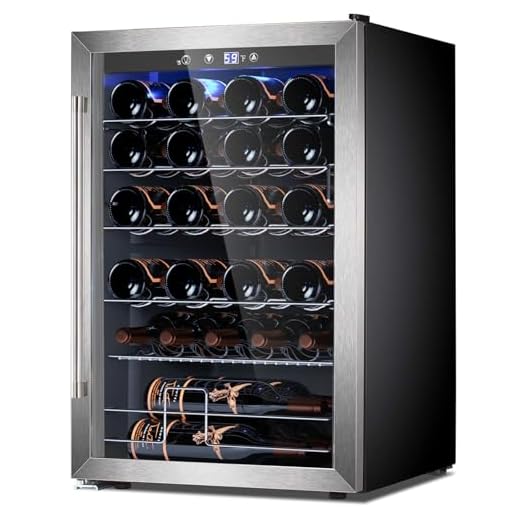



For the best experience, aim for a range between 60°F and 65°F (15°C to 18°C) when enjoying a glass of this beloved varietal. This specific range highlights the nuances and complexity that various blends can offer, ensuring a pleasing aroma and balanced palate.
When you reach for the bottle, consider the type of blend you’re presenting. Full-bodied options often benefit from being slightly warmer, around 65°F (18°C), which allows the flavors to open up, while lighter varieties can shine when served cooler, closer to 60°F (15°C). A simple rule of thumb is to chill a bottle for about 30 minutes in the fridge before consumption to achieve the ideal temperature.
Using a thermometer can be helpful, but your senses also play a crucial role. Pay attention to the bouquet as you pour; if the aromas are vibrant and inviting, you’re likely in the right range. Pairing with food can also influence how you perceive the flavors, so keep in mind the dishes accompanying your glass. Enjoying this delightful beverage at the right temperature elevates the entire experience, making each sip memorable.
Optimal Serving Conditions for Full-Bodied Varietals
For a delightful experience, aim to present these full-bodied varietals at a range of 60°F to 65°F (15°C to 18°C). This range enhances the aromatic compounds and flavor profiles, allowing the complexity of the beverage to unfold beautifully.
Utilize a thermometer to check, or simply feel the bottle; it should feel cool but not chilly. If the bottle is too warm, consider placing it in an ice bucket for a brief period, ensuring that it doesn’t become overly cold, which can suppress flavors.
For lighter styles, such as Pinot Noir, a slightly cooler setting around 55°F to 60°F (13°C to 15°C) works wonders, accentuating the fruitiness and subtle nuances.
Decanting can also play a crucial role. Allowing these beverages to breathe for at least 30 minutes prior to consumption can elevate the tasting experience significantly, softening tannins and enhancing aromas.
Always remember to consider the specific varietal characteristics and the occasion. A well-managed serving temperature can transform a good tasting into an exceptional one, ensuring the full expression of the beverage’s qualities.
Ideal Serving Temperature for Different Red Wine Varieties
For optimal enjoyment, different types of vine-produced beverages require specific serving conditions. Here are the recommended ranges for various selections:
- Light-bodied varieties: 50-55°F (10-13°C)
- Examples include Pinot Noir and Gamay.
- Medium-bodied selections: 55-60°F (13-16°C)
- Look for Merlot and Chianti.
- Full-bodied options: 60-65°F (16-18°C)
- This category features Cabernet Sauvignon and Syrah.
- Bold and rich wines: 65-68°F (18-20°C)
- Consider Zinfandel and Malbec in this range.
Serving these beverages within the specified ranges enhances aroma and flavor profiles, ensuring a more satisfying experience. Always allow for slight variations based on personal preferences and environmental factors.
How to Properly Chill Before Serving
To achieve the ideal drinking experience, start chilling your selection about 30 minutes prior to enjoyment. Place the bottle in a bucket filled with a mixture of ice and water. This method allows for rapid cooling, typically reaching the desired state within 20-30 minutes.
If time is limited, a freezer can be an option, but avoid exceeding 15 minutes to prevent freezing. Wrap the bottle in a damp cloth before placing it in the freezer; this aids in quicker cooling. Keep an eye on the clock to avoid any unwanted icy surprises.
Alternative Cooling Techniques
An alternative approach involves using a wine chiller. These devices are designed specifically for maintaining optimal conditions, providing consistent results. If you have one, it can help ensure the bottle stays at the right level during the serving period.
Temperature Adjustments
If you find your beverage too cool after the chilling process, simply allow it to sit at room temperature for a few minutes before pouring. This quick adjustment can enhance the flavors and aromas, making for a more enjoyable tasting experience.
Impact of Temperature on Flavor Profile
Serving at the right chill level significantly influences the sensory experience of a glass. For instance, if a Cabernet Sauvignon is too warm, the alcohol may overpower the fruit, leading to a lackluster experience. Conversely, when it’s too cool, the rich flavors can be muted, resulting in a flat impression.
Different varietals react uniquely to varying degrees. A Pinot Noir, for example, shines at a slightly cooler setting, allowing its delicate aromas and bright acidity to emerge beautifully. In contrast, a bold Syrah benefits from a warmer ambiance, enabling its robust flavors and spice notes to come to the forefront.
Subtle Nuances
Paying attention to how each temperature range affects the bouquet is crucial. Warmer conditions can enhance aromatic compounds, revealing complexity and depth. For instance, a Merlot served cooler may highlight its tart cherry notes, while at a higher warmth, it may express chocolate and plum characteristics more vividly.
Practical Tips
To optimize your tasting journey, consider using a thermometer to ensure precision. Allow a bottle to breathe by decanting it for a short period, which can also help in achieving the desired profile. Lastly, remember that personal preference plays a role; some may enjoy a particular blend at a slightly different chill than others. Experimentation is key.
Common Mistakes in Serving Temperature for Red Wine
Serving at too high a degree can mask the complexity and nuances of various varieties. Aim for a range between 55°F to 65°F for optimal tasting experiences. Many tend to pour straight from a warm storage area, which can diminish the overall enjoyment.
Another frequent error is neglecting to account for the vessel used. A thicker-walled glass can retain heat longer, leading to a swift elevation in warmth during consumption. Opt for a thinner glass to maintain a cooler drinking experience.
Over-Chilling
Conversely, excessively cooling can lead to a flat profile. When chilled below around 50°F, many characteristics become muted. Always check the specific needs of the style; lighter-bodied varieties might appreciate a slight chill, while fuller-bodied types often require a warmer serving point.
Ignoring Decanting
Many overlook the benefits of decanting, which not only aerates but also allows the wine to reach a desirable warmth post-pour. This can enhance the aromatic profile and provide a more engaging tasting adventure.
Understanding these common pitfalls can significantly elevate your enjoyment and appreciation of fine selections. Always consider both the varietal and the environment to achieve the perfect serving conditions.
Tools and Techniques for Measuring Wine Temperature
A precise reading of the heat level of your beverage enhances the tasting experience. For accurate assessments, consider using an infrared thermometer. This device allows for quick and non-intrusive measurements, making it ideal for checking multiple bottles without any disruption.
Another handy instrument is a digital probe thermometer. Insert it directly into the liquid for a direct reading. This method is particularly useful when dealing with larger formats or decanters where the temperature can vary throughout the container.
Thermal wine thermometers, often designed as sleeves, can be wrapped around the bottle. These provide a visual cue, with color indicators reflecting the heat range, allowing for immediate recognition without any special setup.
For those who enjoy outdoor activities, investing in a portable thermometer can be beneficial. This is especially true if you’re planning to enjoy your favorite varieties while camping. Check out this best solar panel generator for camping to ensure you have power for your gadgets.
Lastly, always remember the importance of calibration. Regularly checking your tools against a known standard will ensure accuracy, ultimately enhancing the overall tasting experience and maximizing the enjoyment of each glass.
| Tool | Type | Benefits |
|---|---|---|
| Infrared Thermometer | Non-contact | Quick and easy to use, measures multiple bottles effortlessly |
| Digital Probe Thermometer | Contact | Direct and precise measurement, ideal for decanters |
| Thermal Wine Thermometer | Visual | Instant color-coded readings, simple to use |
| Portable Thermometer | Outdoor | Convenient for camping and travel |
Recommendations for Storing at Optimal Conditions
Keep your bottles in a cool, dark environment, ideally between 55°F and 65°F. Consistency is key; avoid fluctuations that can compromise quality.
Utilize a dedicated wine fridge if possible, as it provides controlled humidity and temperature settings. Aim for humidity levels around 60%-70% to prevent corks from drying out.
Store bottles horizontally to keep the cork moist, which helps prevent air from entering. Ensure your storage area is free from vibrations and strong odors that can affect the character of your collection.
Avoid putting bottles in direct sunlight or near heat sources. Even slight exposure can alter flavors and aromas, leading to an unsatisfactory tasting experience.
Regularly check the environment where your bottles are kept. A thermometer and hygrometer can help monitor conditions effectively, ensuring your collection remains in peak condition.









